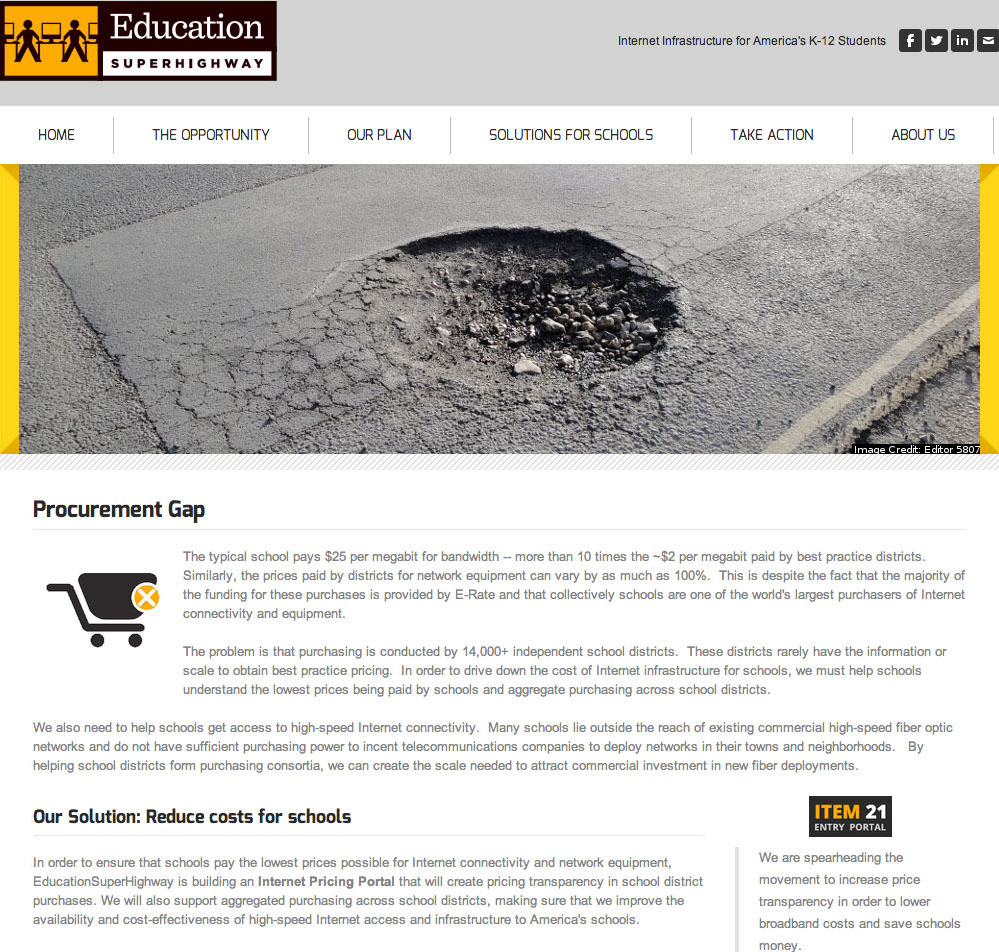
Understanding the cost of public goods has historically been a difficult task. While government budget information is made public, it is often too high-level to determine true costs and key data is buried within hundreds of pages of text, in a format that is difficult to access. The Center for Medicare and Medicaid Services (CMS), however, has been able to extract and share key purchasing data in hopes of helping consumers better understand these costs, and potentially even lower them. Can education learn to do the same?
Data transparency could save health care billions of dollars per year. CMS recently released its Medicare payments to doctors, something that hasn’t been done since the 1970s. By providing this information in an easily consumable format, third parties such as research groups, think-tanks, universities, media, and most importantly the public, have been able to analyze it and discover all sorts of purchasing anomalies. Some key findings to date:
• High regional variance of procedure pricing. A joint replacement in Oklahoma cost around $5,000, while some places in California charge closer to $220,000.
• High variance in pricing by hospitals in the same geographic region. Treating heart failure in Jackson, Mississippi could cost as little as $9,000 or as much as $51,000.
• Over 4,000 doctors are paid over $1 million by Medicare throughout the course of a year.
The information released raises questions about decisions that healthcare providers make around procedures and billing, and it provides a great starting point for where to look when trying to lower costs. This level of transparency also helps the public hold the healthcare industry accountable for fair pricing. Anyone in the U.S. can look across Medicare providers and see who charges more or less, and the CMS can identify providers that may misuse the benefit. Open cost data allows for increased accountability and better conversations with a well-informed public about how this nation chooses to spend its healthcare dollars.
The Power of Pricing Transparency
Federal data shows school districts spending $100 billion annually on supplies and services, and there are many areas where saving could occur. District Internet service, for example, is a multi-billion dollar annual industry, according to EducationSuperHighway, a nonprofit working to ensure adequate K-12 internet access for digital learning (and a grantee of The Learning Accelerator). Most districts take advantage of a federal telecommunications subsidy called E-rate, and districts must report their purchases to be eligible for the subsidy. The information reported, however, is often unused. EducationSuperHighway is starting to shine a light on some of these inefficiencies and has determined that typical districts pay nearly D10 times as much for bandwidth when compared to those that purchase well, and about twice as much for network equipment. To combat this issue, ESH has launched a pricing transparency portal where districts can submit their necessary reports. Through this portal districts can fulfill their E-rate reporting requirements while ESH is able to capture the data, use it to identify cost trends, and help districts buy more cheaply.
Districts and states should be sharing all pricing information with each other to ensure they are getting the best deal possible for our students. Just like how health care consumers can now price shop for medical services, by sharing cost and quality information, districts can easily identify fair prices and valuable products. The concept seems simple, but without standard and shared data, districts will continue to rely on current methods of limited price and quality information they get from a few peers and product references.
Ideally states or the federal government would work to enable information sharing, though a third-party organization may need to operate this initiative if governments fail to do so. The crucial element in leveraging data sharing for cost savings is standardized data. Districts would need to collect and share their technology purchasing data in the same way so all could leverage a larger data set. While the simplest way to achieve this would be on a policy level, it does not appear to be a government priority. Education technology purchasing is in high need of a third party organization to coordinate this information, much like EducationSuperHighway is doing for Internet purchasing, and The Learning Accelerator is working to create one. Districts can play their part by sharing their data and working to create standardized data practices for technology purchasing.
Price transparency is the first step in both lowering costs and increasing accountability, which, like health care, requires better data storage and open data sharing policies (for non-personal information). Health care has provided an early roadmap on sharing data and achieving benefits from it and education should follow a similar path.

